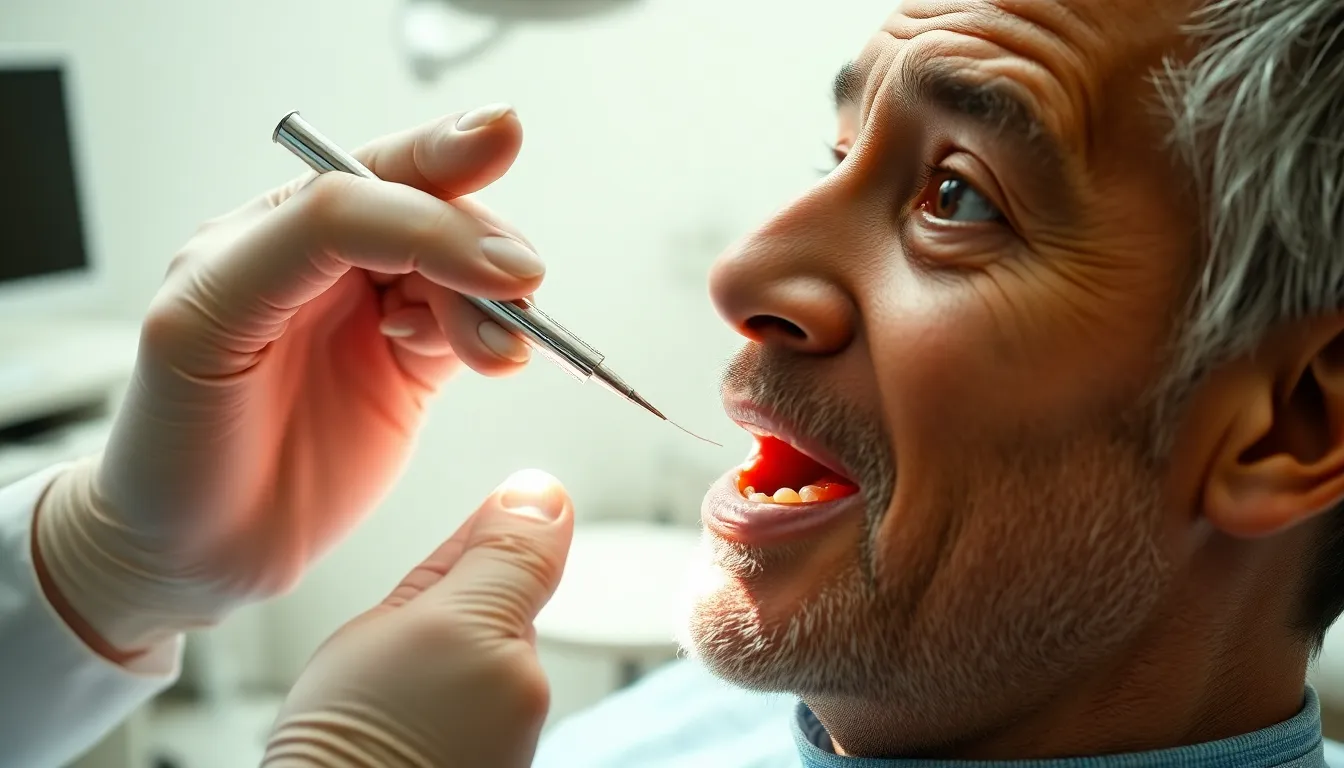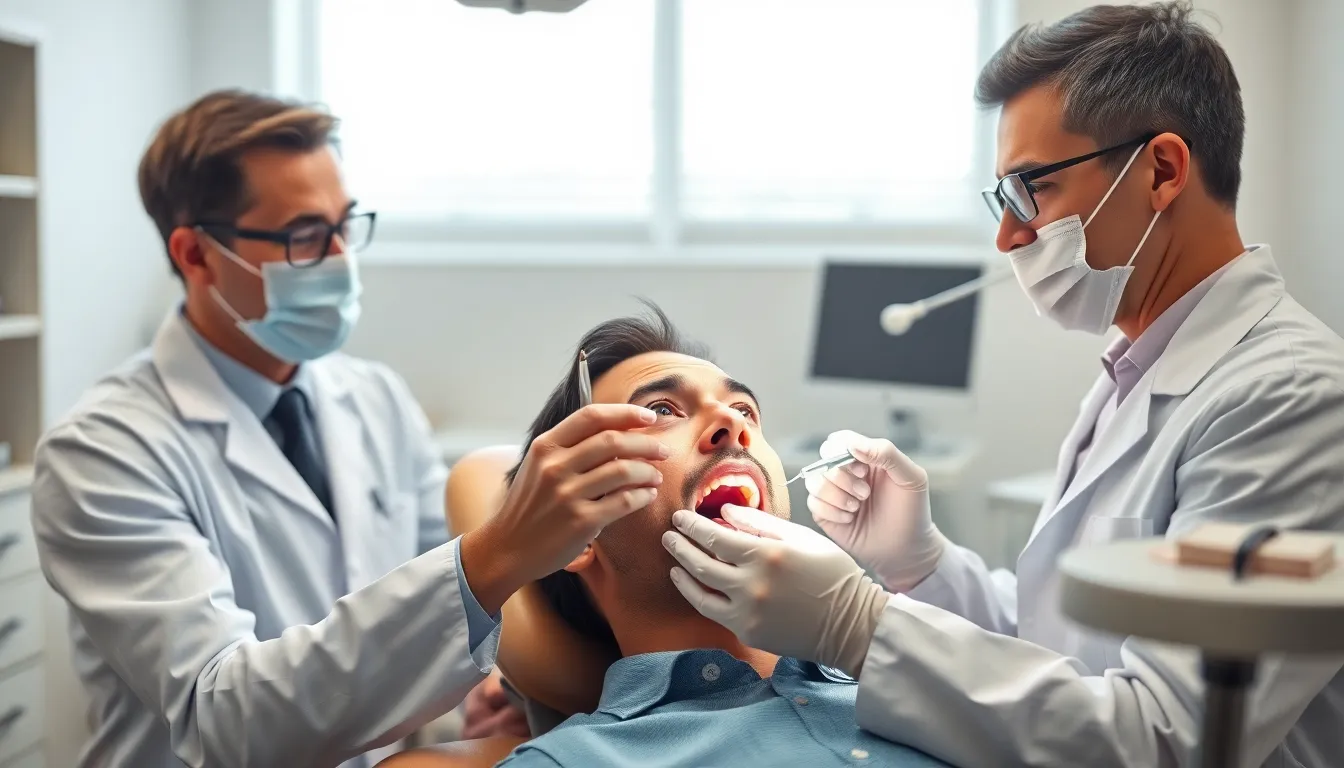Dealing with a broken tooth (muela quebrada) can be incredibly painful and stressful. Have you ever wondered what to do when part of your tooth breaks off unexpectedly? When this dental emergency strikes, knowing the proper steps to take can make all the difference in preventing further damage and relieving your discomfort.
Whether your tooth broke due to decay, trauma, or biting down on something hard, it’s important to address the situation promptly. A broken tooth isn’t just a cosmetic issue—it can lead to infection, more extensive damage, and even tooth loss if left untreated. In this guide, you’ll discover the essential steps to take when handling a broken tooth and when it’s time to seek professional dental care.
Understanding Broken Teeth: Causes and Types
Broken teeth represent one of the most common dental emergencies that can cause important pain and discomfort. They occur in various forms and result from different causes, often requiring prompt attention to prevent further complications.
Common Reasons for Tooth Fractures
Tooth fractures happen for many reasons, with some being more prevalent than others. Biting down on hard foods like ice, nuts, or hard candy often leads to unexpected cracks in teeth. Sports injuries account for approximately 10-39% of dental trauma cases, particularly in contact sports where protective gear isn’t worn. Untreated cavities weaken teeth from the inside out, making them more susceptible to breaking under normal chewing pressure. Car accidents frequently cause dental trauma, with studies showing that 16% of accident victims experience some form of tooth damage. Age-related wear gradually deteriorates enamel, increasing fracture risk in older adults.
Last month, a patient named Rachel came in after cracking her molar on an unpopped popcorn kernel during movie night. “I felt that distinct crack and immediately knew something was wrong,” she explained. What seemed like a harmless snack resulted in a vertical root fracture requiring extraction.
Different Types of Dental Fractures
Dental fractures vary in severity and treatment approaches depending on their classification. Craze lines appear as superficial cracks in the enamel that don’t typically cause pain but may create cosmetic concerns. Fractured cusps involve the breaking of the pointed chewing surfaces of teeth, often causing sensitivity to temperature changes and requiring crowns for treatment. Cracked teeth extend from the chewing surface toward the root but haven’t separated into pieces yet, causing pain during chewing and requiring prompt treatment to prevent complete splitting. Split teeth have completely separated into two distinct segments and typically can’t be saved intact, often necessitating extraction or partial retention. Vertical root fractures begin at the root and extend upward, frequently showing minimal symptoms until infection develops, making them particularly challenging to diagnose early.
When to Seek Professional Help for a Broken Tooth

Contact a dentist immediately if you experience persistent toothache, pain when biting down, or if a important portion of your tooth breaks off. For knocked-out or displaced teeth, try repositioning an adult tooth or storing it in milk while seeking urgent dental care. Even minor chips require professional evaluation to prevent potential complications.
Warning Signs That Require Immediate Attention
Severe pain or throbbing in the affected tooth signals a dental emergency requiring prompt attention. Experiencing pain while chewing or biting down indicates potential nerve exposure or structural damage that needs professional assessment. A large piece of tooth breaking off or complete displacement demands immediate dental care to save the tooth. Sensitivity extending beyond the affected area often points to nerve involvement or infection risk that shouldn’t be ignored. Bleeding or swelling around the broken tooth suggests damage to surrounding tissues that requires urgent treatment.
Dr. Todd B. Harris recalls treating a patient named Miguel who ignored sensitivity in a cracked molar for weeks. “By the time Miguel came in, what started as a small crack had developed into a severe infection requiring root canal therapy instead of a simple filling,” he explains. “Early intervention could have saved him considerable pain and expense.”
Risks of Delaying Treatment
Infection represents the most serious consequence of postponing treatment for a broken tooth, potentially spreading to surrounding tissues and even entering the bloodstream. Further cracking or splitting may occur without proper reinforcement, leading to irreversible tooth loss. Pain and discomfort typically worsen over time as the inner structures become more exposed to external stimuli. Complications requiring more invasive treatments often develop, transforming what might have been a simple repair into the need for root canal therapy or extraction.
Cracked or broken teeth don’t heal on their own, making professional intervention essential for preserving your dental health. Temporary pain relief methods such as over-the-counter medications provide only short-term comfort without addressing the underlying problem. Financial considerations often lead patients to delay treatment, but addressing the issue promptly typically costs significantly less than managing the complications that develop from neglect.
Professional Methods for Removing a Broken Tooth
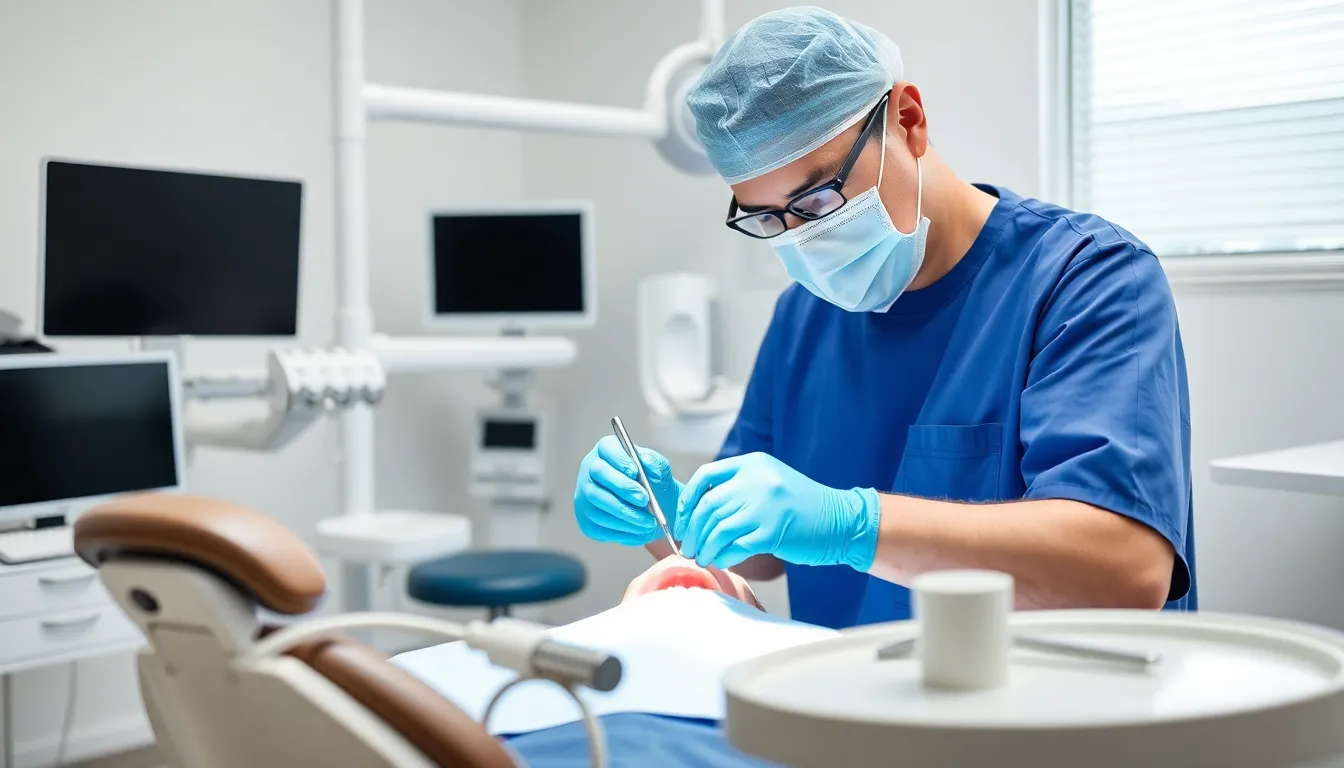
Dental professionals employ several specialized techniques to safely remove broken teeth depending on the extent of damage and location. The approach varies based on whether the tooth is accessible above the gum line or requires surgical intervention to extract fragments below the surface.
Simple Extraction Procedures
Simple extractions represent the standard approach for removing broken teeth that remain sufficiently intact and accessible above the gum line. Your dentist begins by administering local anesthesia to completely numb the area around the affected tooth, ensuring you feel no pain during the procedure. Using specialized dental tools like elevators and forceps, the dentist carefully loosens the tooth from surrounding tissues and gently removes it from its socket. This technique works effectively for teeth with visible structure that can be gripped with instruments. Recovery from simple extractions typically progresses faster than surgical procedures, with minimal downtime and discomfort managed through over-the-counter pain medication. Dr. Harris notes, “Many patients are surprised by how quick and straightforward a simple extraction can be—often completed in under 30 minutes with proper preparation.”
Surgical Extraction Techniques
Surgical extractions become necessary when dealing with teeth broken at or below the gum line where standard forceps can’t grasp the remaining structure. This more complex procedure involves making small incisions in the gum tissue to access the broken tooth fragments or roots. Oral surgeons commonly perform this technique for severely damaged molars, impacted wisdom teeth, or teeth with complex root structures. The procedure typically requires local anesthesia, with sedation options available for anxious patients or complicated cases. Surgical extractions may involve removing some surrounding bone tissue to fully access all fragments, ensuring no potentially problematic pieces remain. Patient Maria experienced this firsthand: “After breaking my molar while eating, only the roots remained below my gums. The surgical extraction seemed intimidating, but my oral surgeon explained each step, making the process much less stressful than I expected.” Recovery from surgical extractions takes longer than simple procedures, often requiring 1-2 weeks for complete healing with proper aftercare.
Step-by-Step Process of Broken Tooth Extraction
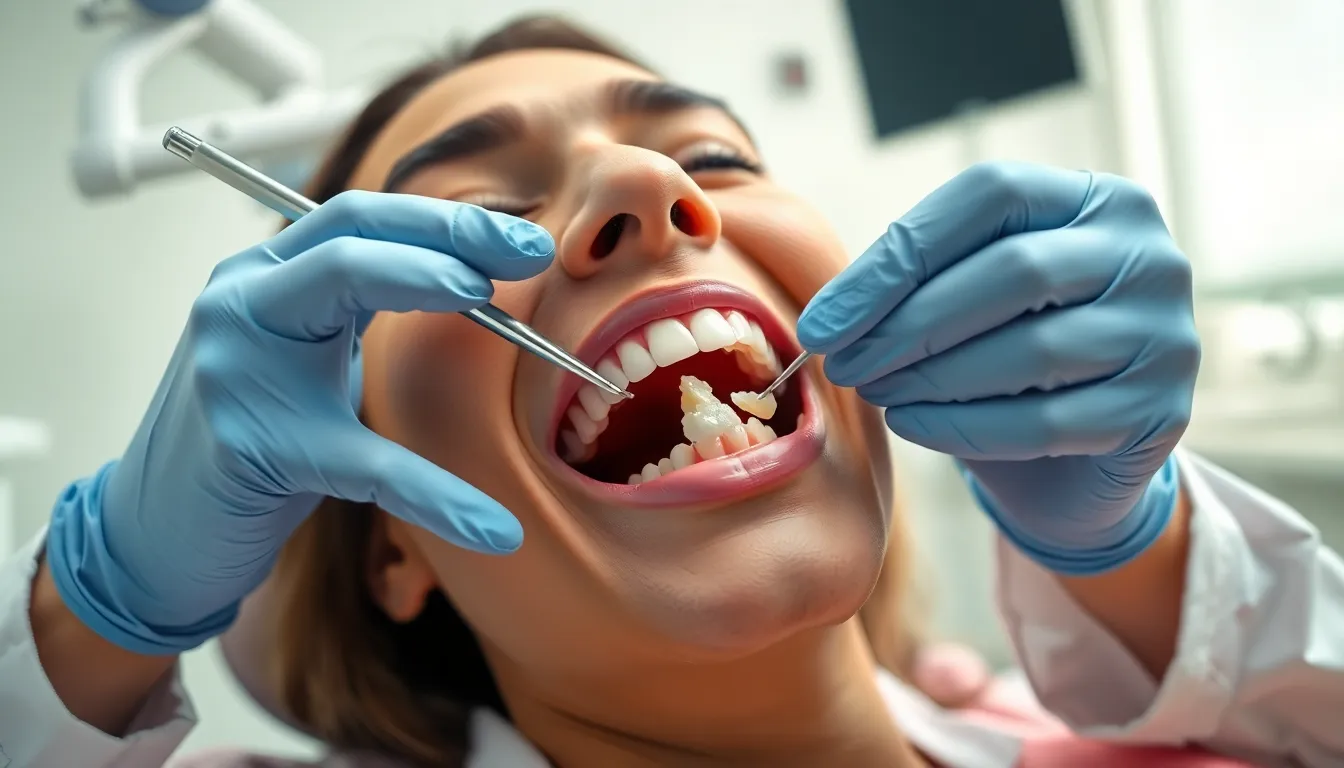
Extracting a broken tooth requires precise techniques and careful handling by dental professionals. The procedure follows a systematic approach to ensure patient comfort while effectively removing the damaged tooth.
Pre-Extraction Preparation
Pre-extraction preparation begins with a comprehensive review of your medical history and dental X-rays to assess the tooth’s condition. Your dentist evaluates the tooth’s position, root structure, and surrounding bone to determine the most appropriate extraction method. Patients taking blood thinners or certain medications might need to temporarily discontinue them before the procedure to reduce bleeding risks. Dr. Todd B. Harris explains, “We always discuss pain management options and potential sedation with patients who express anxiety about the extraction process—creating a comfortable environment is just as important as the technical aspects of the procedure.”
The preparation phase also includes a detailed explanation of what to expect during and after the extraction. Your dentist will provide instructions on pre-procedure fasting if sedation is planned and arrange for someone to drive you home if stronger sedatives will be used.
What to Expect During the Procedure
The extraction process starts with the dentist numbing the area using local anesthetic to ensure you feel no pain throughout the procedure. After the anesthetic takes effect, the dentist uses specialized tools called elevators to loosen the broken tooth from its socket by gently rocking it back and forth. Forceps are then employed to grasp and carefully remove the tooth or its fragments.
For teeth broken at the gum line, your dentist may need to make a small incision in the gum tissue to access the remaining fragments. Complex cases might require sectioning the tooth into smaller pieces for easier removal. Maria, a patient who recently underwent a broken molar extraction, shares, “I was nervous about having my broken tooth removed, but the step-by-step explanation from my dentist helped me understand what was happening, which made the experience much less stressful.”
Once the tooth is completely removed, your dentist cleans the socket to remove any debris or infected tissue. They may place stitches to close the wound if necessary, particularly after surgical extractions. The final step involves placing gauze over the extraction site and asking you to bite down gently to control bleeding and help a blood clot form. The entire procedure typically takes between 20-60 minutes depending on the complexity of your case.
Pain Management During and After Extraction

Effective pain management is crucial when dealing with a broken tooth extraction. Proper techniques ensure your comfort throughout the procedure and support faster healing afterward.
Anesthesia Options for Tooth Removal
Local anesthesia serves as the primary method for numbing the area around your broken tooth, making the extraction procedure virtually pain-free. Your dentist typically administers an injection containing lidocaine or a similar numbing agent directly into the gum tissue surrounding the affected tooth. For patients with severe anxiety or complex cases, dental sedation options provide additional comfort. Conscious sedation using nitrous oxide (laughing gas) helps you remain awake but relaxed during the procedure. Deep sedation or general anesthesia might be recommended for extremely complicated extractions or for patients with dental phobias, allowing you to remain completely unconscious throughout the process.
Dr. Todd B. Harris notes, “Many patients express concern about pain during extraction, but modern anesthesia techniques have made the procedure remarkably comfortable. I always take time to explain the options so patients can make informed decisions about their care.”
Post-Extraction Pain Relief Methods
Over-the-counter pain medications effectively manage discomfort after your broken tooth extraction. Ibuprofen (Advil, Motrin) reduces both pain and inflammation, while acetaminophen (Tylenol) offers pain relief without anti-inflammatory effects. For more severe cases, your dentist might prescribe stronger medications like codeine or hydrocodone, though these are typically limited to short-term use due to their potential for dependency.
Cold therapy plays a vital role in immediate post-extraction care. Applying ice packs to your cheek near the extraction site for 10–20 minute intervals during the first 24 hours helps reduce swelling and numbs pain. Make sure to wrap the ice pack in a towel to prevent skin damage from direct contact with ice.
Saltwater rinses promote healing and provide natural pain relief starting 24 hours after your extraction. Mix ½ teaspoon of salt in a cup of warm water and gently rinse your mouth, being careful not to disturb the blood clot that forms in the extraction site. This simple solution helps cleanse the wound and reduce discomfort without harsh chemicals.
Lisa, a patient who recently underwent a broken molar extraction, shares: “The saltwater rinses were surprisingly effective. After following my dentist’s instructions about rinsing gently, I noticed significantly less pain by the third day, and I didn’t need to rely on pain medication as much as I expected.”
Diet adjustments significantly impact your comfort level during recovery. Stick to soft foods like yogurt, mashed potatoes, smoothies, and soups for the first few days. Avoid hot, spicy, crunchy, or hard foods that could irritate the extraction site or dislodge the protective blood clot. Gradually reintroduce normal foods as healing progresses and discomfort subsides.
Warm compresses become beneficial after the initial 24-48 hours when swelling begins to subside. Applying a warm, moist towel to your cheek helps relax jaw muscles that may have tensed during the procedure and improves blood circulation to speed healing. Use the warm compress for 20 minutes at a time, several times daily.
Following your dentist’s post-extraction instructions diligently leads to faster healing with minimal pain. Complete any prescribed antibiotic course to prevent infection, even if you start feeling better before finishing the medication. Contact your dentist immediately if you experience severe pain that worsens after 2-3 days, as this could indicate a complication like dry socket or infection requiring prompt attention.
Recovery After a Broken Tooth Extraction
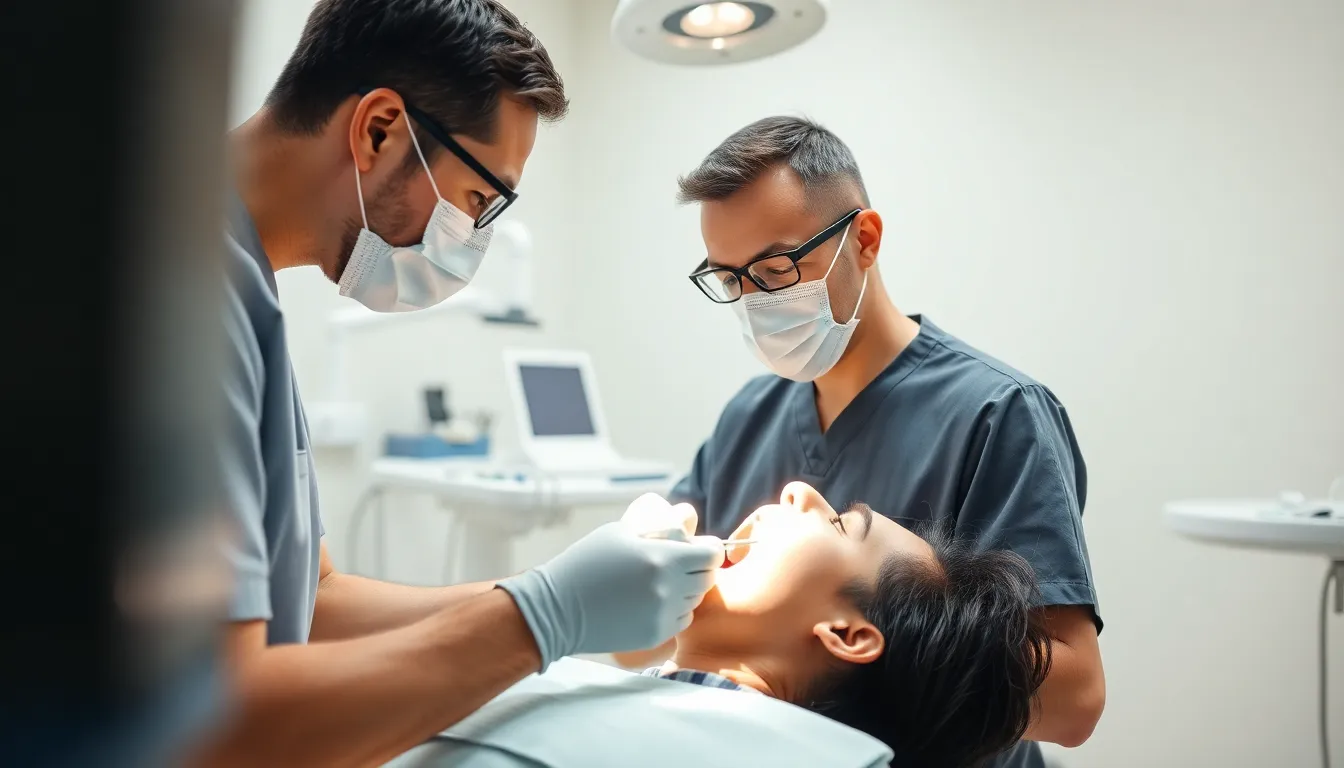
Broken tooth extraction involves completely removing the damaged tooth to prevent infection and further complications. After this procedure, your body begins the healing process, allowing you to return to normal activities within 48-72 hours, though complete jawbone healing takes longer—typically several weeks for most teeth and up to four months for molars.
Aftercare Instructions
Following proper aftercare instructions significantly improves your healing experience and reduces complications. During the first 24 hours post-extraction, avoid rinsing, spitting, or using straws as these actions can dislodge the critical blood clot forming at the extraction site. Smoking and alcoholic beverages should be eliminated during this initial period as they interfere with healing. Gently bite on gauze pads to control bleeding, replacing them every 20-30 minutes until bleeding subsides.
Rest is essential—limit physical activity and avoid strenuous exercises like jogging or heavy lifting. Your diet plays a crucial role in recovery; stick to soft, cold foods such as yogurt, applesauce, rice, pasta, and eggs while avoiding chewing on the extraction side, especially while still numb.
After the first day, begin gentle salt water rinses 2-3 times daily (½ teaspoon salt in 8 ounces of warm water) to keep the area clean without disturbing the healing site. Resume your regular oral hygiene routine but carefully avoid direct contact with the extraction area. Continue eating soft foods and avoid hard, crunchy, or spicy items that might irritate the healing socket.
Dr. Todd B. Harris notes, “Many patients underestimate the importance of the ‘don’t disturb’ phase of healing. I’ve seen remarkable differences in recovery times between those who carefully follow aftercare instructions and those who don’t.”
Potential Complications to Watch For
Monitoring for potential complications helps you address issues before they become serious problems. Excessive bleeding that continues beyond 24 hours requires contacting your dentist promptly. Infection signs include fever, severe pain that worsens after 2-3 days, unusual swelling, or pus drainage from the extraction site.
Dry socket (alveolar osteitis) represents one of the most common complications, occurring when the protective blood clot becomes dislodged prematurely, exposing sensitive bone and nerves. This painful condition requires professional dental treatment to resolve. Prolonged numbness or unusual sensations lasting more than a few hours after anesthesia wears off might indicate nerve involvement.
Patient Maria shared her experience: “After my broken molar extraction, I noticed increased pain on day three instead of feeling better. I called my dentist immediately, and it turned out I had developed a dry socket. Getting prompt treatment made all the difference in my recovery.”
Any worsening symptoms or severe discomfort signal the need for immediate dental consultation. Following these guidelines ensures proper healing after your broken tooth extraction while minimizing potential complications through vigilant care and monitoring.
Tooth Replacement Options After Extraction
Replacing a missing tooth after extraction prevents serious oral health problems including shifting of adjacent teeth, jawbone deterioration, and chewing difficulties. Several replacement options exist, each with distinct advantages depending on your exact situation and needs.
Dental Implants and Bridges
Dental implants offer the most natural-feeling and durable solution for replacing extracted teeth. These titanium posts surgically placed in your jawbone function as artificial tooth roots, providing a stable foundation for an attached crown that restores both function and appearance. Dr. Todd B. Harris often recommends implants to patients concerned about long-term oral health, noting that “implants preserve bone structure in ways other replacement options simply cannot match.”
Fixed bridges provide another permanent solution without the surgical component of implants. They consist of two crowns placed on the teeth adjacent to the gap with a false tooth (pontic) connected between them. Bridges effectively maintain proper tooth alignment and restore your bite functionality. Rachel, a patient who chose a bridge after her molar extraction, shared: “I was hesitant about surgery, so my bridge gave me back my smile without the more invasive procedure. I can eat normally again, and nobody notices I had a tooth removed.”
Partial Dentures and Other Alternatives
Removable partial dentures present a less invasive and more affordable alternative for tooth replacement. These dental appliances feature artificial teeth attached to a gum-colored base that clasps to your remaining natural teeth. Partial dentures can be easily removed for cleaning but may feel less stable than fixed options.
Conclusion
Dealing with a broken tooth requires swift action to prevent complications and preserve your oral health. Whether you need a simple or surgical extraction the process is manageable with proper professional care.
Remember that post-extraction care is crucial for successful healing. Following your dentist’s instructions about pain management rest and dietary restrictions will help ensure a smooth recovery.
After extraction exploring replacement options like dental implants fixed bridges or partial dentures isn’t just about aesthetics—it’s essential for maintaining proper tooth alignment and jawbone health.
Don’t postpone seeking help for a broken tooth. The sooner you address the issue the better your outcome will be both in terms of comfort and long-term dental health.
Frequently Asked Questions
What causes a broken tooth?
A broken tooth can result from biting hard foods, sports injuries, untreated cavities, car accidents, or age-related wear. Even everyday activities can lead to dental emergencies, as illustrated by Rachel who cracked her molar on a popcorn kernel. The severity can range from minor craze lines to serious vertical root fractures.
How do I know if I need emergency dental care for my broken tooth?
Seek immediate dental care if you experience persistent toothache, pain while biting, or if significant portions of your tooth break off. Severe pain, sensitivity, or visible damage are warning signs that require urgent attention to prevent complications like infections or permanent tooth loss.
Can a broken tooth heal on its own?
No, cracked or broken teeth do not heal on their own. Unlike other body tissues, tooth enamel cannot regenerate. Timely professional intervention is essential to prevent further damage, infection, and potentially higher treatment costs. Delaying treatment often leads to more invasive procedures being necessary.
What’s the difference between simple and surgical tooth extraction?
Simple extractions are performed on intact teeth accessible above the gum line, using local anesthesia and basic dental tools. Surgical extractions are required for teeth broken at or below the gum line, involving incisions in the gum tissue and potentially longer recovery times.
How long does a tooth extraction procedure take?
A typical tooth extraction procedure takes between 20-60 minutes. The duration depends on the complexity of the case, the location of the tooth, and whether it’s a simple or surgical extraction. Pre-extraction preparation includes reviewing medical history and taking dental X-rays to ensure proper planning.
How can I manage pain during and after tooth extraction?
During extraction, your dentist will use local anesthesia and possibly sedation techniques for comfort. After extraction, manage pain with prescribed or over-the-counter medications, cold therapy, and saltwater rinses. Follow your dentist’s recommendations for dietary adjustments, favoring soft foods and avoiding irritants.
How long is the recovery period after a broken tooth extraction?
Normal activities can typically resume within 48-72 hours, but complete jawbone healing may take several weeks to four months, especially for molars. Follow aftercare instructions carefully, including avoiding actions that could dislodge the blood clot, such as vigorous rinsing or using straws.
What complications should I watch for after extraction?
Monitor for excessive bleeding, signs of infection (swelling, fever, bad taste), and dry socket (intense pain 3-5 days after extraction). Dry socket occurs when the protective blood clot becomes dislodged, exposing the bone and nerves. Contact your dentist immediately if you experience these symptoms.
What are my options for replacing an extracted tooth?
After extraction, replacement options include dental implants (most natural-feeling and durable), fixed bridges (non-surgical options that maintain tooth alignment), and removable partial dentures (less invasive and more affordable). Replacing missing teeth prevents shifting of remaining teeth and jawbone deterioration.
Is it necessary to replace a tooth after extraction?
Yes, replacing an extracted tooth is highly recommended. Without replacement, remaining teeth may shift, affecting your bite and jaw alignment. Jawbone deterioration can also occur in the extraction site. Replacement options preserve oral function, appearance, and help prevent future dental problems.



